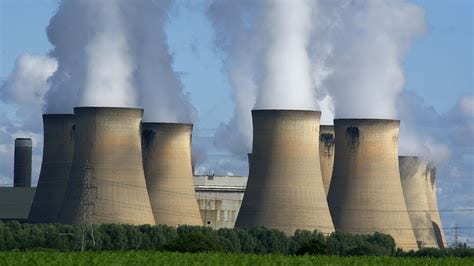
Human rights are dependent on the environment, and we can address many environmental rights issues to bring about a better world for all those who live on this green and blue planet that we call home. In this sense, environmental rights ARE human rights, and taking a human rights approach to address these environmental rights can close the gaps of inequality between the Global North and the Global South countries. I am dedicating a series to deep dive into this human rights approach to environmental rights. We began this series by focusing on how issues around food and water can be addressed with a human rights approach. This blog will focus on air, another essential need for all living things, and how issues surrounding access to clean water can be addressed with a human rights approach.
The Right to Clean Air and the Consequences of Air Pollution
Like food and water, the air is another resource that humans and other creatures cannot live without. In fact, the Earth’s atmosphere, along with the water found here, is a special phenomenon that enables the Earth to support life. The atmosphere acts as a barrier between the organisms on Earth and the sun’s harmful ultraviolet (UV) rays, that when consumed in large quantities, can lead to cancer and death. Even the water that exists on Earth depends on the atmospheric pressures, and the layers of the atmosphere allow for warmth to heat up our planet so that life can exist comfortably. While the atmosphere is life-giving, any minute changes to the atmosphere can have drastic impacts on all living creatures on Earth, including humans.
Layers of the Atmosphere
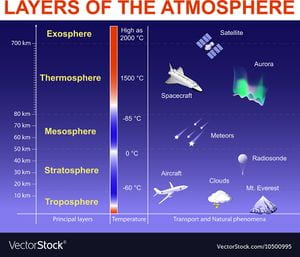
There are many layers of our atmosphere, which are characterized based on their atmospheric temperatures. The four main layers are the troposphere, stratosphere, mesosphere, and thermosphere, in order. Further out is the exosphere, and the outermost layer is the magnetosphere. Understanding the different layers of our atmosphere, and the crucial roles they play to protect life on Earth can help us better appreciate the planet on which we live. The Troposphere is the layer closest to the surface, in which we exist. This is the layer that produces much of our weather patterns and contains 75% of all the atmosphere’s air. The temperatures in this layer grow colder the farther they are from the Earth’s surface, with temperatures varying based on the weather patterns.
The Stratosphere is the next layer, which exists above the troposphere, is 22 miles long and contains the most important element of our atmosphere, the Ozone Layer. The Ozone Layer is the layer within the stratosphere that absorbs the sun’s heat and radiation, filtering the harmful rays to make them safe for consumption by all living beings. In this layer, the air is colder closer to the troposphere, and the air is warmer as it increases in height, a consequence of the sun’s UV rays and their warming effect. In the 1980s, scientists realized that some of the chemicals we were using in refrigerators and in hair sprays (chlorofluorocarbons or CFCs), were causing the Ozone Layer to develop a large opening over Antarctica, exposing all the Earth’s organisms to the harmful UV rays of the sun. There was a global effort to end the use of these chemicals, and the Earth’s Ozone Layer is in the process of healing today. This healing process will take years, as a new UN study predicts that it will take another 43 years for the Ozone Hole to fully heal.
Next is the Mesosphere, which is where all the gases exist in a mixture rather than in specific layers. About 22 miles long, this layer is where the meteors and other objects from space burn up, a phenomenon we are familiar with as “shooting stars.” Above the mesosphere is the thermosphere, which captures much of the X-ray radiation from the sun, and the temperatures in this layer rise with height. This layer exists alongside the ionosphere, where the electrons from the layer’s atoms and molecules are transformed into positive charges due to the sun’s solar radiation. This layer is about 319 miles long, with temperatures reaching as high as 4,500 degrees Fahrenheit. The thermosphere is the layer in which the International Space Station is positioned, and the ionosphere allows radio waves to be reflected and absorbed, allowing us to make use of those radio waves to broadcast around the world.
Beyond the thermosphere is the exosphere, a layer that is 6,200 miles long, and considered to be the Earth’s outermost layer. Home to many gases such as hydrogen and helium, the exosphere does not have any oxygen to breathe. This is the layer that contains the satellites which enable us to use tools like GPS, weather monitoring systems, and other communication networks. As with all the other planets in our solar system, Earth has an outer shell, called the magnetosphere that is responsible for creating a magnetic field around the planet that interacts with the Earth’s iron core and is responsible for protecting our planet from solar flares, cosmic rays, and the impacts of solar winds. Scientists at NASA who study the magnetosphere’s complexity propose that Earth has the strongest magnetosphere than any of the other planets in our solar system and that this magnetic field is largely responsible for making the Earth habitable.
Greenhouse gases, air pollution, and global warming

There are many gases that are present in our atmosphere. These gases include Carbon Dioxide, Methane, Nitrogen, and others. While these are gases that are naturally present in the atmosphere, an excessive amount of these gases can cause a greenhouse effect in the atmosphere. The sun warms up the Earth’s surface during the day, and as the sun goes down and cools the Earth’s surface, this heat is released back into the atmosphere. Yet, the greenhouse gases present in the atmosphere trap some of that heat in the atmosphere. This function is actually required for the possibility of life to be sustainable on Earth. Without this effect, the Earth would drop to unbearable temperatures as soon as the sun goes down. Unfortunately, when more and more of these gases are present in the atmosphere, it traps more and more heat on the Earth’s surface. This is exacerbated by the activities of humans, especially following the Industrial Revolution, as the amount of these greenhouse gases present in the atmosphere is increasing by the year.
Sources of Air Pollution and Their Health Impacts
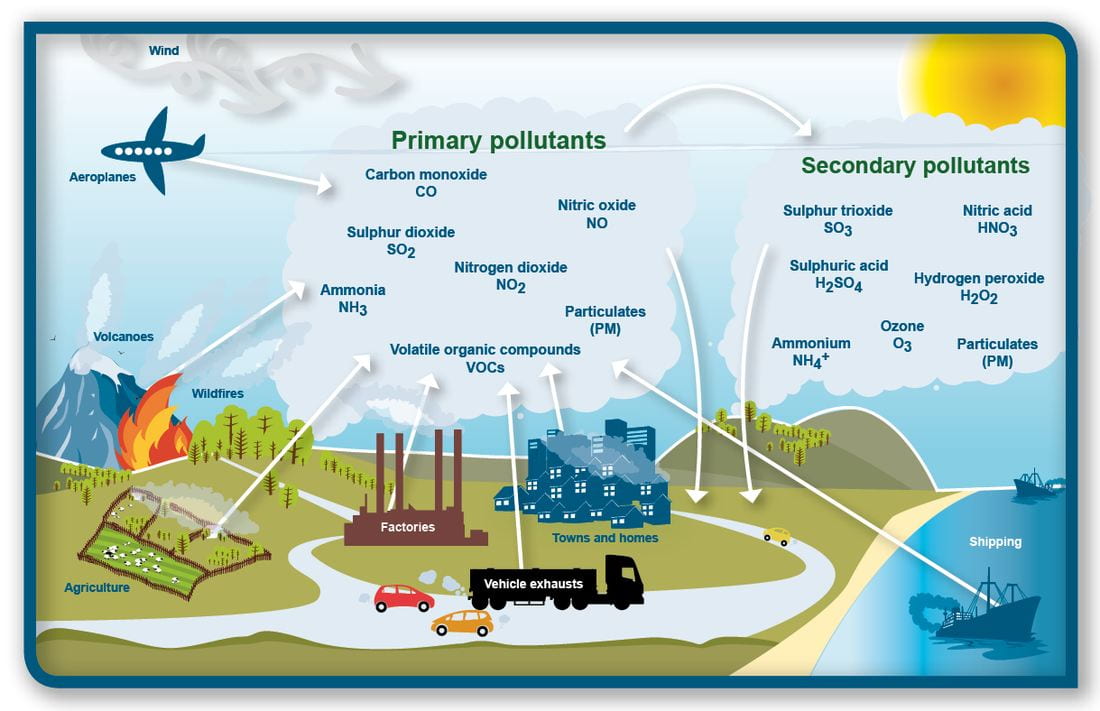
Anthropogenic (caused by humans) Source
There are many human activities that cause air pollution, trapping greenhouse gas emissions in the atmosphere. While I will not be able to list them all here, I have comprised a list that includes a few anthropogenic activities that cause air pollution, as well as a few natural occurrences that add to this issue. Some human activities that cause air pollution include various things like transportation, residential use, waste management, and more. Many industries add to the air pollution through the complex processes they use when converting raw materials into usable items to be sold. These processes not only release chemicals from the materials used but also release various gases from the burning of fossil fuels that is converted into energy and heat to be used during these processes. Various forms of transportation can also cause air pollution, from driving gas cars to flying jets. We regularly use large trucks to transport our goods across states, use large cargo ships to transport goods across oceans, and use airplanes to transport goods and people across the globe. All these vehicles release greenhouse gases, including its biggest polluter, Carbon dioxide (CO2), and Nitrogen oxide (NOx), both of which can be harmful to humans in large quantities. In fact, Nitrogen Oxides can cause respiratory issues, and damage the lungs.
Another source of air pollution comes from our personal use and commercial uses. For one, our personal use of motor vehicles adds to this issue, as well as our burning of coal, wood, or other sources of energy conversion that provide us with heat. We also release chemicals into the air with the cleaning products we use, the hair sprays and perfumes we use, and even in the cigarettes that are smoked by many people. In fact, smoking tobacco releases ten times more emissions than what comes out of a diesel engine. Smoking tobacco releases what is known as Particulate Matter (PM), which is made up of minuscule amounts of dust, smoke, soot, or other particles in the air, and is one of the most harmful pollutants to humans. Their microscopic size allows them easy access to our lungs, and sometimes even into our bloodstreams, flaring up respiratory issues, and eye irritation, and could even lead to lung cancer.
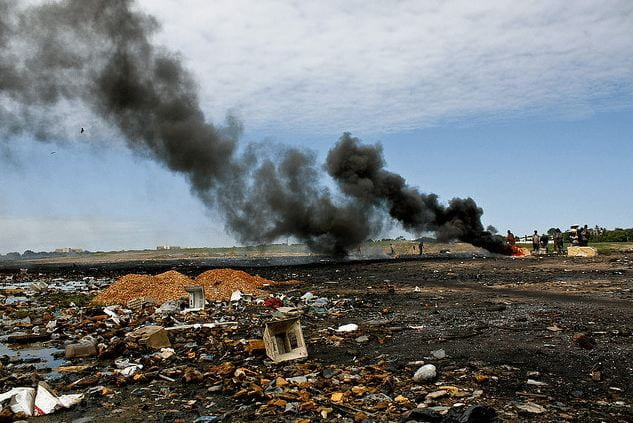
Not surprisingly, another source of air pollution comes from our waste management practices, whether it be storing waste in landfills, or waste incineration to convert the trash into energy. Many of us simply use trash pick-up services without thinking too deeply about what happens to the trash we throw away. Much of our trash ends up in landfills, which are most likely to be located in impoverished areas, and near communities of color. These landfills are dumping sites for waste products, and although there are regulations and standards of waste disposal, much of the waste that ends up in landfills contain both hazardous and non-hazardous waste. These landfills not only produce stringent odors but also release greenhouse gases from these piles. Some of the waste that does not end up in landfills will be sent to be incinerated and converted into energy.
While this is better than storing waste in landfills, (as it is being recycled to be used as energy), the process of incinerating the trash releases further toxins and pollutants into the air, adding to the problem, even as it provides a solution. The United States parcels much of its trash to China to be incinerated there, and this is an example of environmental racism. This transaction of waste generated by the exceeding consumer culture in America was being transferred to China to deal with the consequences of eliminating the waste for us. We do not think about these instances, because our problems are shipped away across the oceans for others, who are less fortunate, to deal with it. Only recently has China stopped buying our waste, and as a result, this has caused a global issue of waste disposal.
Natural Sources
There are also many natural sources of air pollution, such as dust, forest fires, volcanoes, and more. I include agriculture in the natural sources even though it is a mixture of both anthropogenic and natural sources of air pollution. Cows, pigs, and other livestock release greenhouse gases, such as CO2, Methane, and Ammonia, through their bodily wastes. Heavy machinery, such as tractors and other farm equipment emit greenhouse gases from their exhausts. The use of pesticides and herbicides further releases toxic chemicals into the air.

Similarly, other natural sources of air pollution include natural disasters, such as volcanoes, forest fires, and tornadoes. When volcanoes erupt, they endanger the surrounding communities of living organisms with the hot-flowing magma. They also release toxins into the air, including volcanic smog and oxides that can cause acid rain. Forest fires also release pollutants into the air. When
You would not think that flooding impacts air quality, but this natural disaster also pollutes the air. Flooding unearths many creatures buried deep in the soil. Along with this, however, flooding causes molding of furniture, buildings, and homes. Many types of molds are harmful to humans, as they can cause respiratory issues such as asthma. These respiratory illnesses due to this natural disaster, as well as all the other anthropogenic sources of air pollution, have been amplified due to the recent pandemic. Coronavirus, a respiratory illness, has exacerbated the impacts of these conditions.
On the other end, severe droughts also can lead to an increase in air pollution. Droughts can lead to soil erosion, which can kick up dust into the surrounding air, increasing the PM amounts in the air. Droughts also dry up surrounding lakes and waterways on which dams are built to sustain the energy needs of local communities nearby. Without the functioning dams, people will likely burn more wood, coal, and charcoal for energy use, further adding to the air pollution. This air pollution can even impact the formation of clouds, and as a result, limit the precipitation coming from the clouds, leading to more droughts. This is a vicious cycle of drier and hotter weather leading to more of the same.
Apart from their cyclical nature, droughts can also lead to forest fires. When temperatures are hot and the land is very dry, this is the perfect environment for wildfires to thrive in. Trees catch on fire due to the surrounding conditions, and when these wooded areas are burning, it has an amplified effect of burning wood at home. This natural disaster releases toxic gases, and large amounts of PM, and the smoke can be very harmful for inhalation. Many areas like California, which suffer from wildfires almost every year, are evacuated during these disasters, as the smoky air is not safe to breathe in. This disaster is capable of uprooting entire communities, and the more it spreads, the more trees it takes with it. These trees, which absorbed much of the CO2 in the area are destroyed, further releasing larger amounts of the gas into the atmosphere.
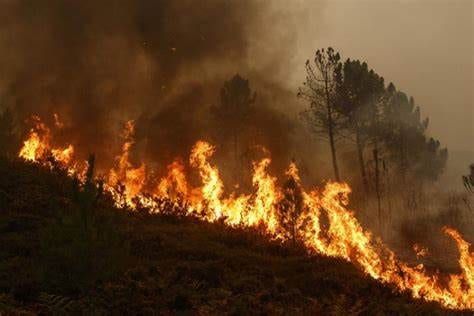
Finally, there is a phenomenon known as ocean acidification, that further exacerbates the issue of global warming and air pollution. The ocean absorbs much of the CO2 in the air, and through a complex chemical reaction due to the mixing of this gas with the seawater, the ocean itself becomes more acidic and the levels of carbonate ions found in the ocean decrease. These carbonate ions are an important element for the survival of coral reefs and other structures in the marine ecosystem. This phenomenon also heats up the ocean, further leading to the melting of ice sheets that support arctic wildlife and provide fresh water to the surrounding communities. Instead, these sheets are melting into the ocean, mixing with the saltwater, as a result, becoming unavailable as a source of drinking water. Along with this issue, the changes in the atmosphere, temperature, and environment lead to phenomena such as coral bleaching, which is when coral reefs are naturally bleached white, and become more vulnerable to diseases and death. Many species in the marine ecosystem rely on corals for food and shelter, and even we as humans rely on corals for our medicine and as protection from erosion. As there are increasingly large amounts of CO2 present in the atmosphere.
Human Rights Approach to Air

Humans may not have control over natural disasters, but we do have control over our own actions and the impact they have on our surrounding communities and environment. There are some ways in which we can take a human rights approach to redesign our infrastructure and our society to reflect environmentally conscious lifestyles. Big industries, power plants, and sewage plants need a lot of energy to function, and this energy can be harnessed through renewable sources of energy instead of the current status quo of using fossil fuels. In recent years, solar energy, wind energy, hydropower, and wave energy are just some sources of renewable energy. A renewable source requires that it be both sustainable and self-sufficient, and while some of these sources of energy still have a bit of an environmental impact, it is not nearly as much as fossil fuels and other greenhouse gases do. Using solar energy, for example, requires solar panels that use lithium batteries which have to be mined for, but using solar energy eliminates greenhouse gas emissions from fossil fuel use, reducing air pollutants in the atmosphere, and as a result, improving the air quality. These renewable sources of energy are already available to us; governments need to step in and implement these infrastructures across the board.
When it comes to air pollution from personal use and commercial use, there are a number of ways to eliminate, or at least limit the number of pollutants being released into the air. As with large industries, solar panels can also be installed for use in homes and commercial buildings. Solar energy is abundant, as there is no limitation to the sun’s energy, and as such, provides a free source of electricity and heating that people in impoverished areas could benefit from, financially, as well as the health benefits they can provide. Instead of using harmful chemicals to clean with, we can make use of natural materials, (such as white vinegar) to clean with. Beauty products and hair products can be made with natural materials like rose water instead of harmful chemicals that are not healthy for us to inhale, and unhealthy to be applied on our skin.
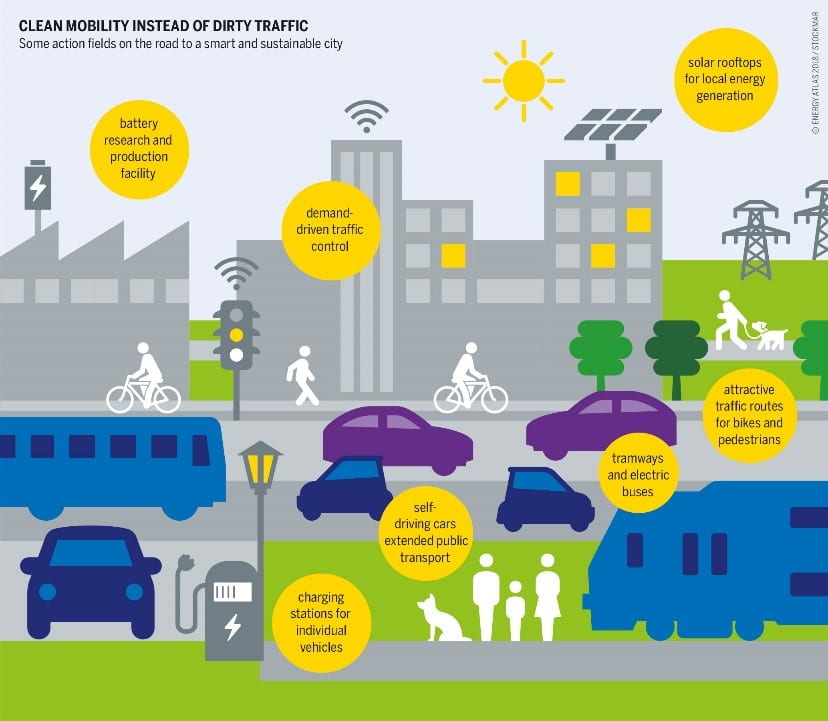
Another anthropogenic source of air pollution, transportation, can also be addressed with new technology. Hybrid cars have been on the market for decades now, which switch back and forth between fuel and electricity to run the vehicle. Newer models are available today that are fully electric vehicles, and as such, run solely on electricity rather than fossil fuels. This prevents the emission of toxic gasses into the atmosphere that is released from traditional car exhausts. The EPA reports that even accounting for the electricity required to charge the electric vehicles, and the manufacturing stages, EVs have lower emissions of greenhouse gases than gasoline and diesel vehicles. We as a society need to transition from these gasoline and diesel vehicles to using electric-powered vehicles for our transportation needs. Also, designing trains and buses that use electric power to run, and constructing the necessary infrastructure to be used broadly can also address the transportation shortages that many people in rural areas and the outskirts of urban areas face.
Finally, we can change some of our habits of waste disposal to be more conscious of our practices. We can be mindful of the waste that we are disposing of, by composting food wastes and recycling cardboard, metals, and plastics properly. We can demand more regulations on single-use plastics, and demand that companies find creative solutions for single-use utensils and tableware. For example, there have been historical practices in many parts of the world that have incorporated single-use tableware with an environmentally conscious framework by making use of leaves to create plates, bowls, and cups, and using coconut shells as scooping spoons. These products are organic, and as such, will be biodegradable, instead of plastics, which are very difficult to break down naturally. We also need to think of innovative ways to transform trash into usable energy without adding more pollutants into the atmosphere.
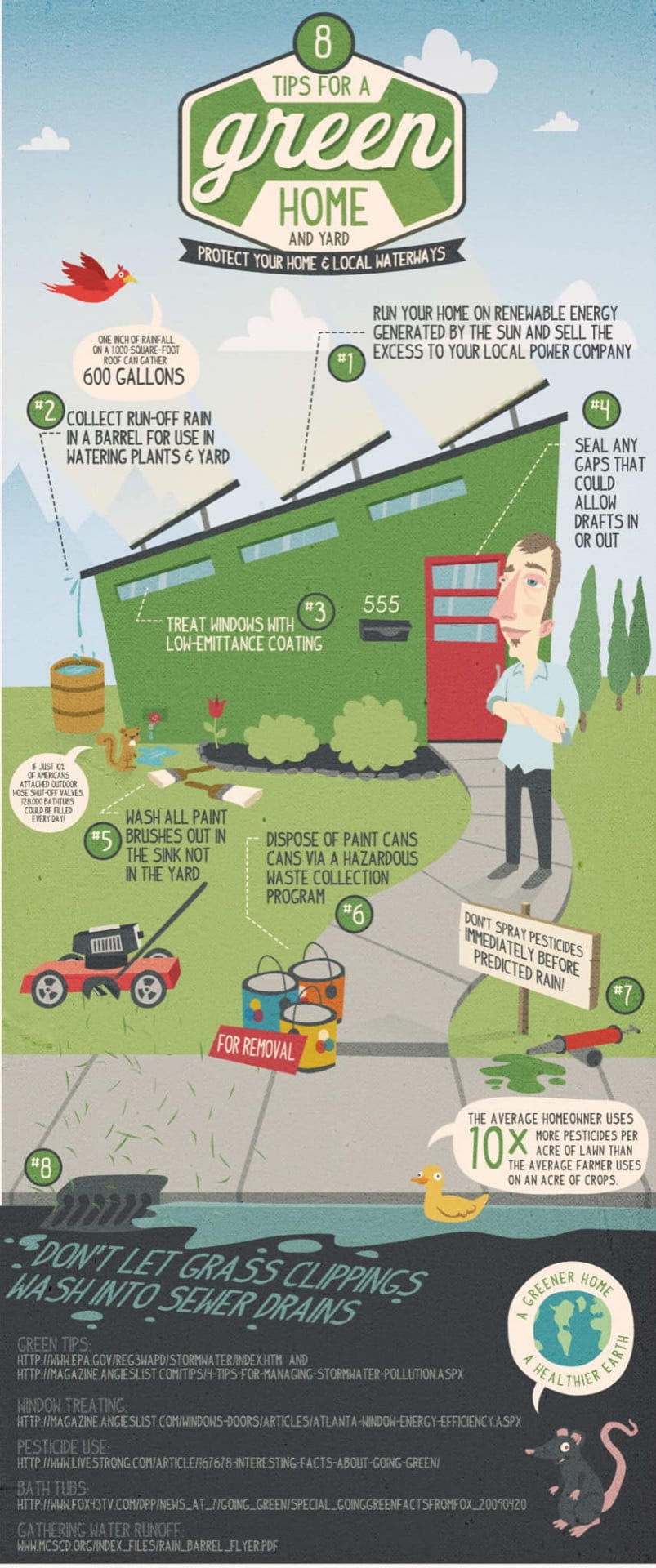
If we cut down our activities in these areas, it will reflect on the severity of our natural disasters, and as such, have an indirect impact on reducing the air pollution caused by these natural sources.
In the upcoming blogs, we will focus on how infrastructure, the economy, our healthcare system, and even our technologies are impacted by the environment, and as such, impact our human rights as a whole.
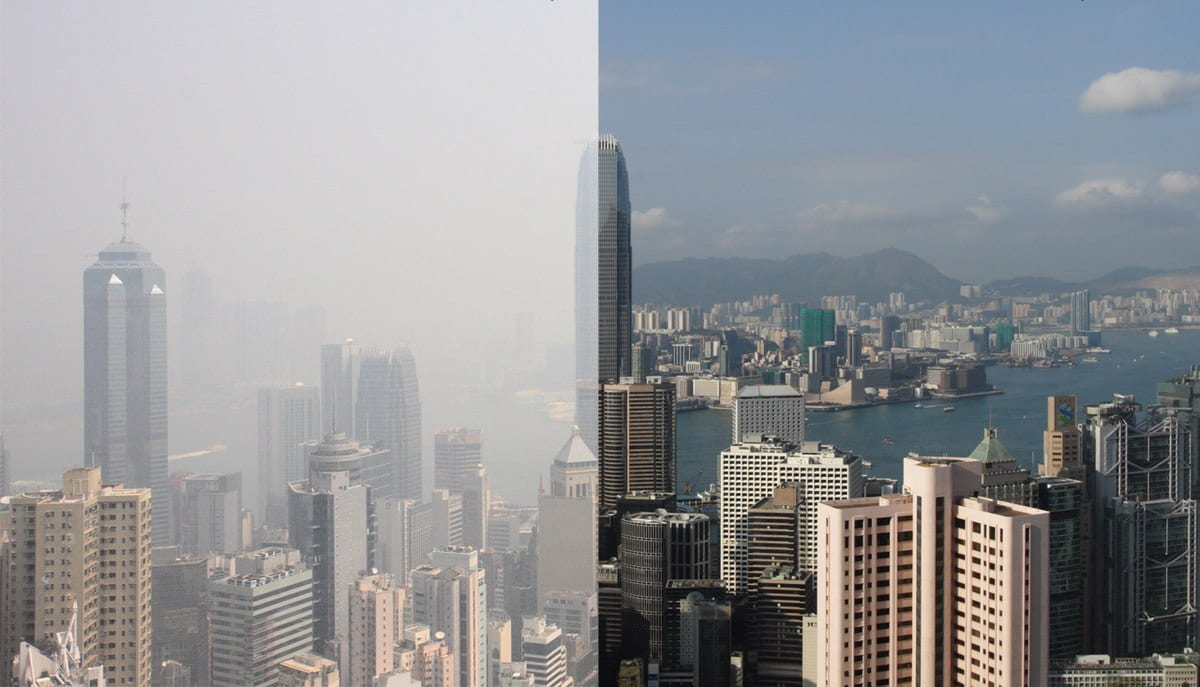

Published by